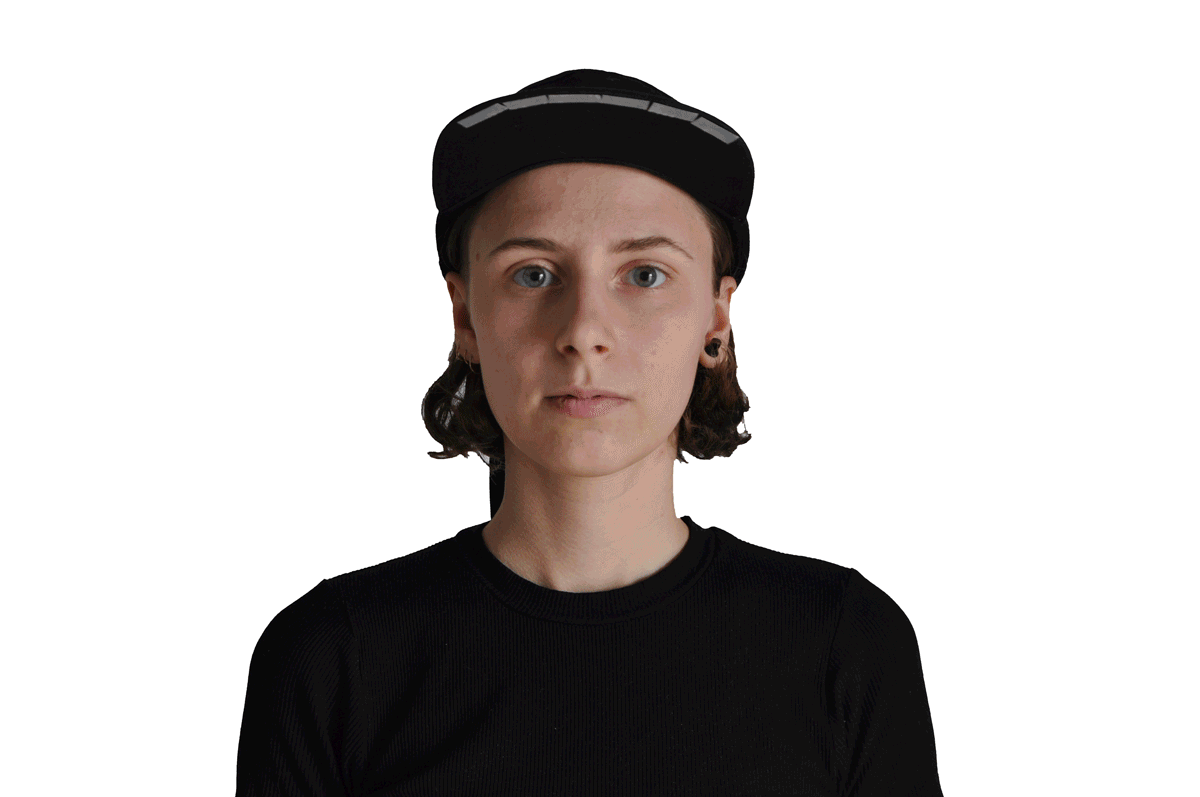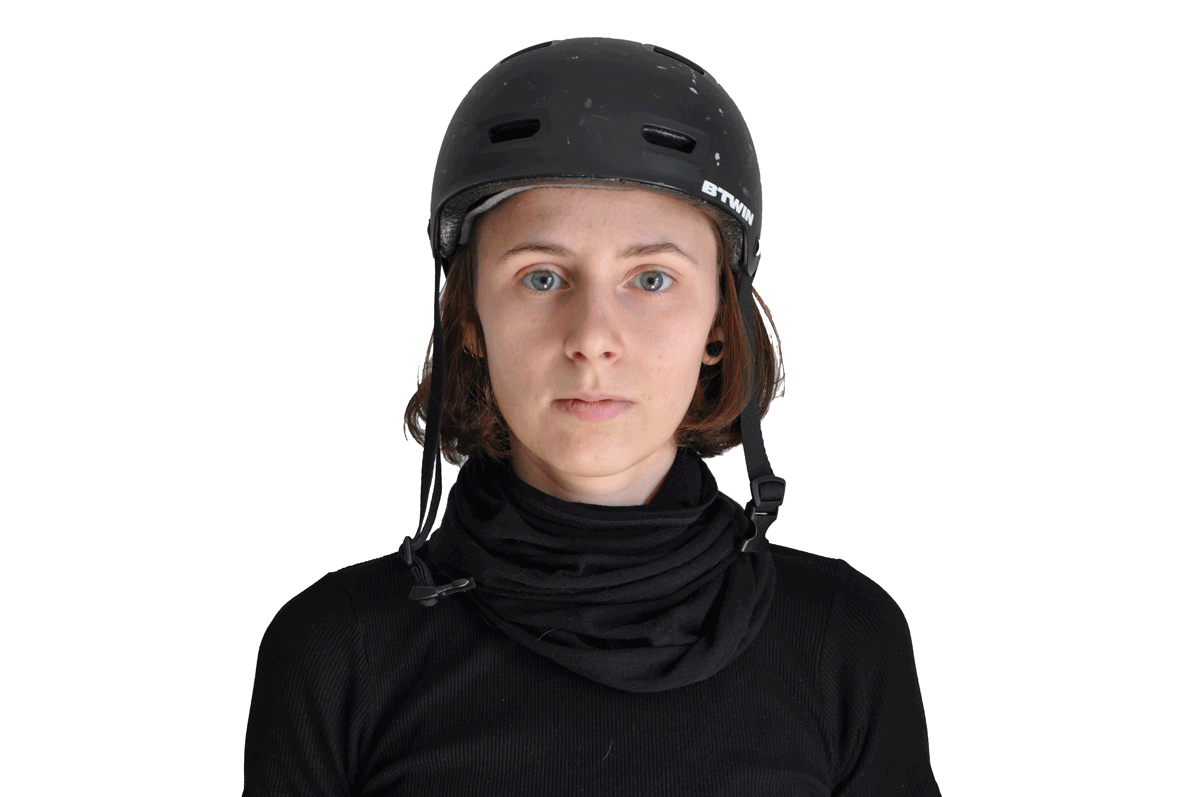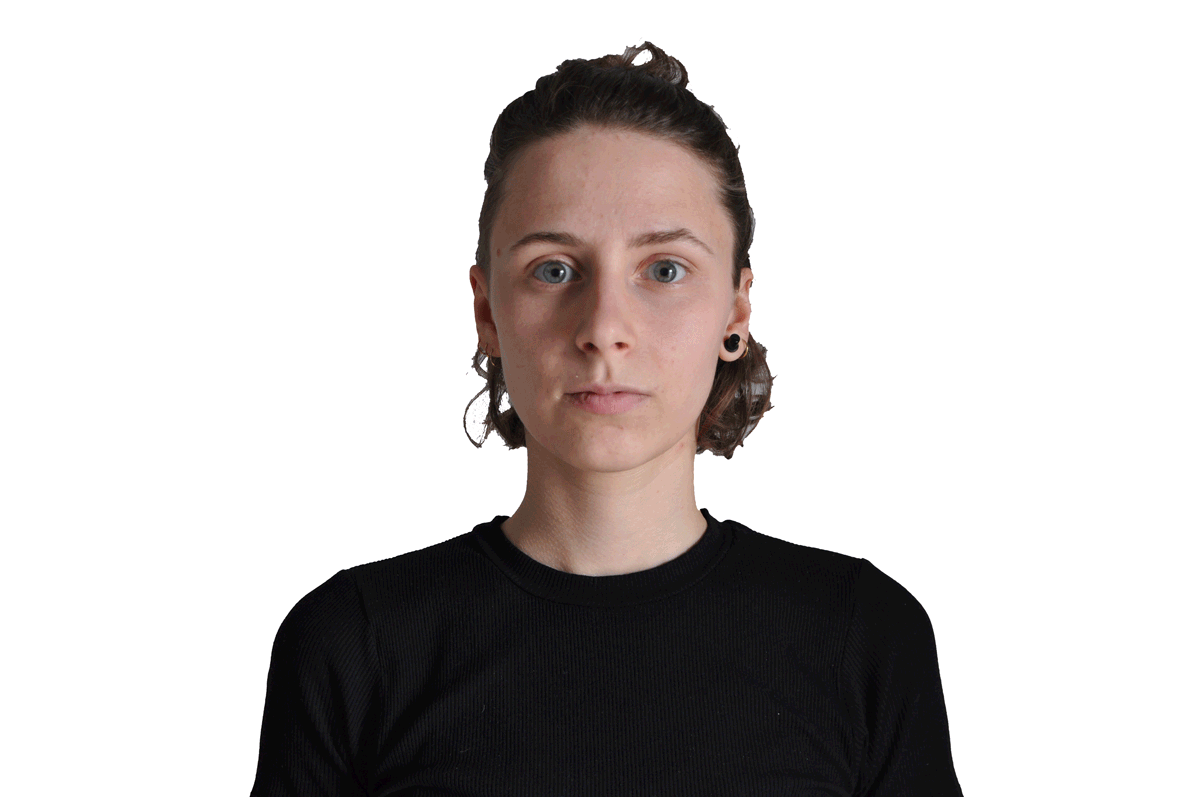2018
Moving Image
Ist das schon Vermummung?
2018, Bewegtbild
Ist das schon Vermummung?
(Is this already masking?)
This project deals with the Anti-Face Veiling Act, which in 2017 prohibited the covering of the face in all public spaces in Austria. Colloquially, this was negotiated as the „burqa ban“. Because, although it criminalizes all types of face covering, in terms of discourse politics it arose from the debate on tightened immigration and asylum policies. The project addresses the legal gray areas of the law and plays with them by asking: Where does masking start? Thus, in the following sequences of images, each individual image poses the question, „Is this already masking?“

What does identifiable mean?
What is to be understood as face covering is often in legal gray areas, as it is not clarified when a person is „no longer recognizable“. „No longer recognizable“ is a very elastic definition, as it always implies a comparison to an identifiable solid state. Identities, however, are fluid and change within life. In comparison to which phase of life am I recognizable? Can I change this state to which I am compared? What period of time does this encompass? Not only within the whole life, but also short-term changes in appearance, raise the question of what identifiable means?
The elasticity of the law became clear, for example, when cyclists wearing scarves were fined. The reason given by the police was that it was not yet cold enough.

Legal gray areas open up the possibility of deciding the question "What is identifiable?" along different discrimination categories. Thus, the goal of the law was formulated as "promoting integration by strengthening participation in society and ensuring peaceful coexistence in Austria". This highlights the racist and sexist origin, which criminalizes burqa- or niqab-wearing women. It regulates who is considered to be a dangerous body in public space in opposition to "securing peaceful coexistence in Austria" and thus has to be standardized by "promoting integration", e.g. through dress codes.

What about Face Recognition?
At the same time, the Anti-Face Veiling Act could also prevent people from defending themselves against surveillance by biometric systems such as facial recognition, by criminalizing Anti-Face-Recognition Make-up. Marginalized groups are thus often the target of surveillance and at the same time it is ensured that they cannot protect themselves against it. Here, legislation and technical systems intertwine, both of which are designed to criminalize bodies that have been constructed as „dangerous“ in public space.